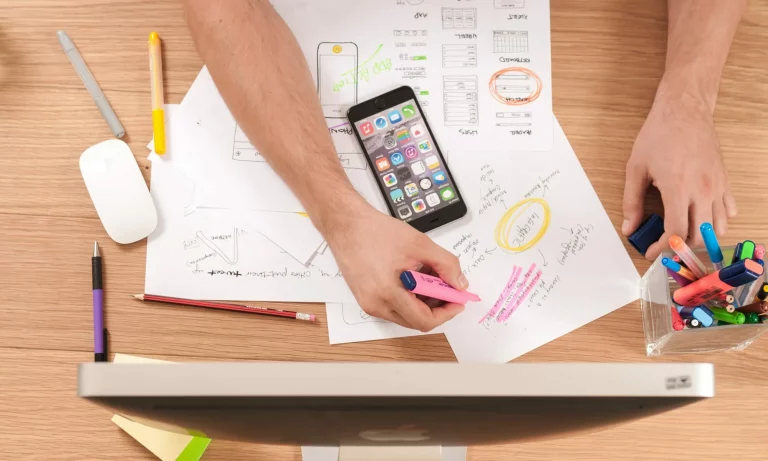I recently attended a course on project management for creative projects. Here are some key takeaways on improving client satisfaction.
Practising empathy

Creative projects involve some extra stress. You should always make sure that your client knows that you care about their project. It might be just a small job to you, but to that client, it’s everything. This is a key part to their business or their personal lives. They hired you to produce a video because as a start-up, they need it to go out and seek funding to launch their business. When you show the client that you care and that you take the project seriously and are an equal partner, they’re going to be invested in you. With heightened client satisfaction, they’ll continue to come back for years and refer you to others.
You need to take the project seriously and show them that you care. Additionally, always try to think about things from the client’s point of view. There are things that are perfectly common sense, why you need that makeup artist, what that extra camera is for, of course why you can’t move forward until you have the script. But the client doesn’t understand these things necessarily. They might not be really steeped in the projects that you’re working on.
Don’t make them ask i.e. you don’t want to lose the faith of your clients. If your clients need to ask you for an update, they’re likely worried or that you’ve done something that concerns them. That’s not to say that you have to constantly give them a play by play, but you should have a communication schedule and an update schedule outlined. They should feel confident that they know that things are running smoothly.
Often they hire us because they don’t have the skills internally. As such, they’re relying upon you not just to do a great end job, but to hold their hand through the process. You need to be a great communicator about what’s happening and what the next steps are in the project. Serve as a tour guide and make sure you think about their point of view. If they look nervous or uneasy, try to get to the root of it and help them through what’s holding them up. Remember, if the client is not happy, the project isn’t going well, so you need to pay attention to their point of view.
Fostering open and frequent communication

Keeping your clients happy is the ultimate goal when it comes to a project’s success. After all, if they’re unhappy, you’re going to have difficulty getting paid. And you’re likely going to lose them as a client for future jobs. So you need to have good and open communication. Don’t just rely upon electronic communication, because phone calls or face-to-face meetings can really help out, and particularly, let you see more of what’s going on underneath the surface.
This open communication is critical. If they have a bad feeling, or they’re concerned about something, they need to be able to tell you. You may have to have some constraints here, because you can’t spend all your time in meetings or on the phone, but it is important that they are able to reach out. Remember, perception is reality. If the client perceives a problem or thinks that something’s wrong, something is wrong. Their lack of confidence means that the project is at risk.
Emotions can have a huge impact here. Creative projects can be scary. There’s lots of things that are difficult to track, lots of things that are very uncertain. E.g. if you haven’t worked on a video project a lot, you may see things that you don’t understand. The video may not look good until it’s colour corrected. So, always try to think about things from the client’s point of view. How are they seeing things? This is going to help you identify potential issues, and make it easier to see what the prospective problems are.
Additionally, you’re going to be able to decide if the fight is worth it. This doesn’t mean that you roll over on all issues. There will be times that you have to stand your ground or be firm with clients in their best interest. But not everything is worth fighting over. And, not every creative decision you make is going to line up with their objective. It doesn’t mean that you’re not good at your job, it just means that sometimes you’re going to have to compromise. Lastly, remember when to choose your battles. Not everything is worth fighting over. So you’re going to need to sometimes think about the overall relationship as you’re deciding how you’re going to respond.
Performing a client debrief
Having a debrief with the client is critically important, particularly as the project moves towards completion. This allows you to identify any open issues. The client may have expectations of certain things that are still coming, or a last-minute change that maybe you forgot about. Identifying open issues is important, and it allows you to make sure that everything is wrapped up so you can close the project and bill.
During the lifespan of a project, tensions may arise, particularly with creative projects. There’s going to be disagreements or people feeling like they didn’t win. This allows the air to be cleared, and allows a little bit of objectivity. After the dust has settled, you can have a good, healthy conversation about ways to be more effective. It also gives you a chance to provide some lessons learned. You can share with the client things that might make future projects run more smoothly, or identify areas that affected the budget negatively. Don’t be overly emotional here, just share things that can improve efficiency, and be willing to listen to them as well, they likely have several ideas on what you can do better.
What this does is create an environment of trust and confidence. They feel that you want to be better, and that every project they do with you is going to get better. Finding good partners is important, and people will choose to work with people that they have confidence in.
Being a resource to your clients

In order to improve the relationship with your client, be sure to be seen as a resource. While open and frequent communication can help with this. it’s also a good idea to connect. For example, using a service like LinkedIn, you can stay in touch with each other. This allows you to track their professional growth and to remain part of it as they continue to move forward in their career. By letting people see a bit of your personality, and get to know you as a person, they’re going to be more likely to want to work with you. They’ll also better understand you and what drives you. Think about connecting on shared interests as well. There’s a good chance that you and you clients have something in common, and finding that out allows you to have a relationship that goes just beyond the project.
Also, be sure to pass praise up the chain of command. If your client, a teammate or partner is doing a great job and you have a way to deliver it, let other people know. Passing on that praise and letting people know about great team members on the client side is a way to build trust. This isn’t about just lavishing praise on people for the attention, it’s about being a good and open communicator. As you start to manage a creative project, making sure that everyone on the team is comfortable with each other and understand strengths, and see where to improve, is going to lead to overall long-term relationships and better efficiency.






